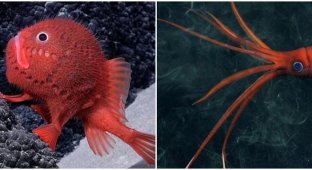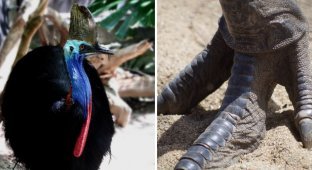Giant Salamander: People in China Are Crazy About These Giants! (11 photos)
The times of giant amphibians are in the mists of time. You won't find mastodontosauruses weighing 2 tons or 6-meter-long prionosuchs in any corner of the planet. Now the largest amphibians on the planet are represented by giant salamanders, which look more like kombucha mushrooms that crawled out of jars and learned to get food on their own. Can they really be considered the heirs of those giants? 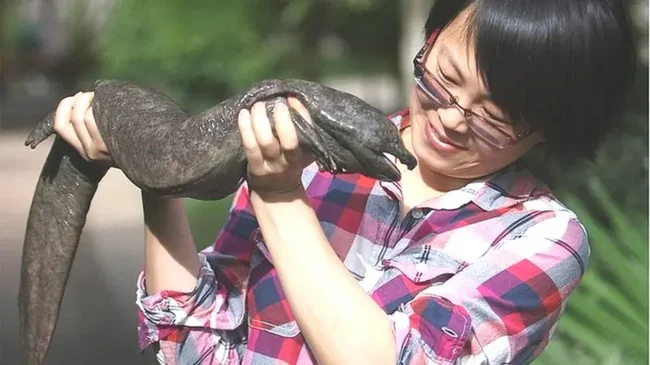
Grandma shows off her kombucha mushroom.
Giant salamanders are 5 species of unattractive amphibians ranging in length from 100 to 180 centimeters and weighing 30-50 kilograms. Until recently, it was believed that there were only two species - the Chinese and Japanese salamanders, respectively. But in 2018, Chinese scientists managed to prove that there are 4 species hiding under the mask of the Chinese salamander. And in the past, there were even more: representatives of the genus lived in Canada, the USA, Western Siberia and Germany 5-8 million years ago. Anyone who has ever seen photographs of giant salamanders will not confuse them with other amphibians. And, of course, their strange appearance is not a quirk of evolution, but the consequences of adaptation to living conditions. 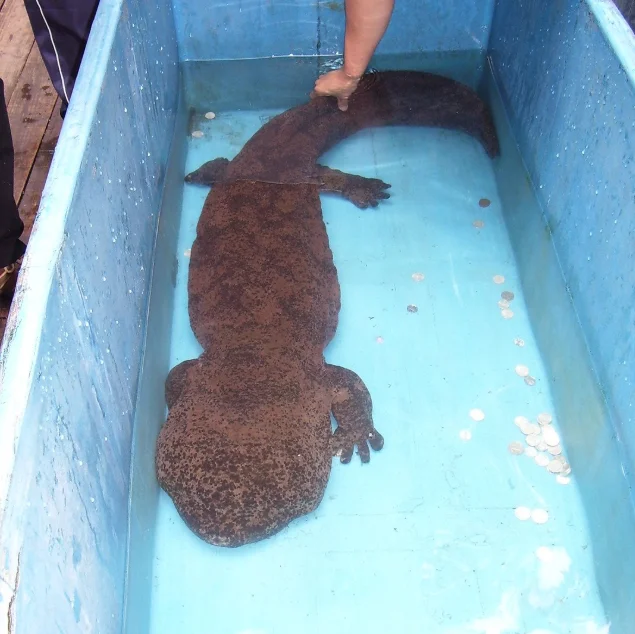
As we all know, cats love to climb into boxes.
The entire body of the giant is covered with folds of skin so that the amphibian does not simply suffocate. Salamanders receive most of their oxygen through their skin, not through their lungs, but the larger the animal, the less effective this type of breathing is. To at least partially solve this problem, salamanders acquired numerous folds of skin. 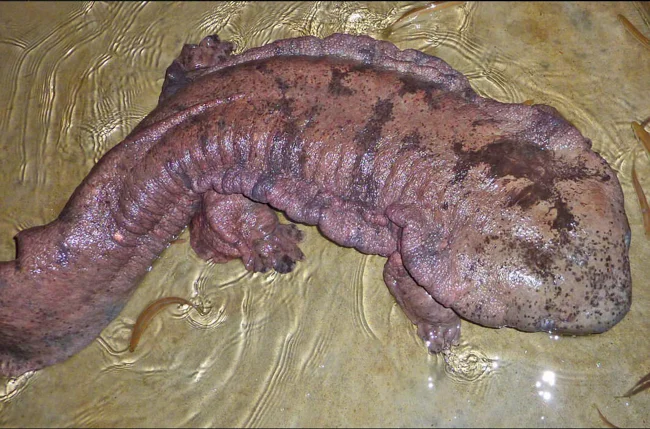
Stop throwing socks around the house! They've already come to life... 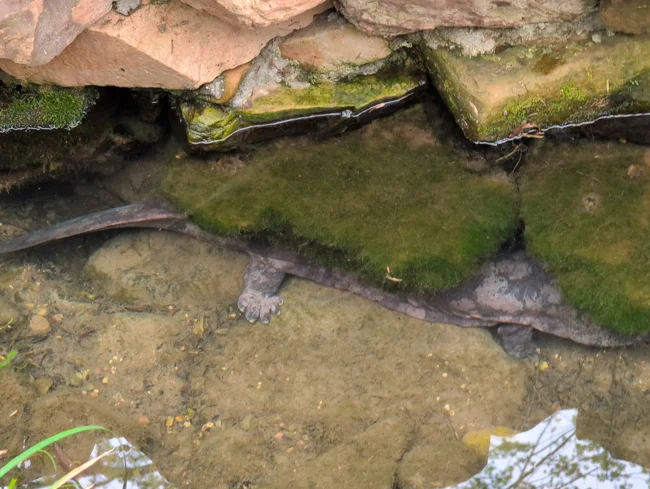
Despite their size, it's not that easy to spot a salamander. They just want to hide under a boulder.
And these folds blur the predator's silhouette while it's lying in wait. And when the prey is close enough, the huge mouth — half the size of the snout — comes into play. It is capable of swallowing medium-sized fish, freshwater crayfish, frogs, rats and other small land vertebrates in one go. Decent prey, if you do not remember that ancient amphibians could even hunt small dinosaurs. 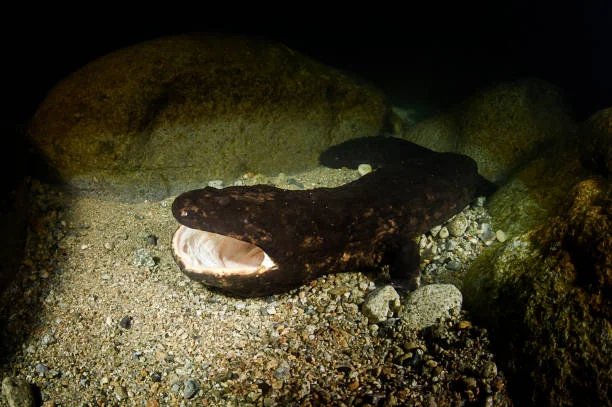
No time to explain, get in the mouth quickly!
Because of this lifestyle, the salamander's eyes have been simplified to almost motion sensors. For the most part, amphibians rely on smell and touch. They even developed lateral lines — special organs that allow them to subtly feel the movements of the water around them. These organs are common in fish, but are rare in amphibians. 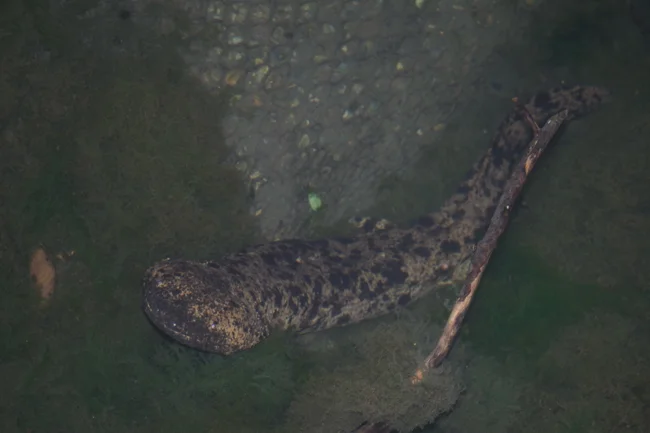
When you drop a piece of jellied meat on the floor and look down at it.
Size and diet quite strictly limit the habitat of amphibians. Salamanders are most easily found in clean, oxygen-rich streams and rivers, only occasionally do they move to stagnant water bodies and swamps with the help of their short legs. And in today's reality, such a lifestyle works against them: amphibians are dying out. 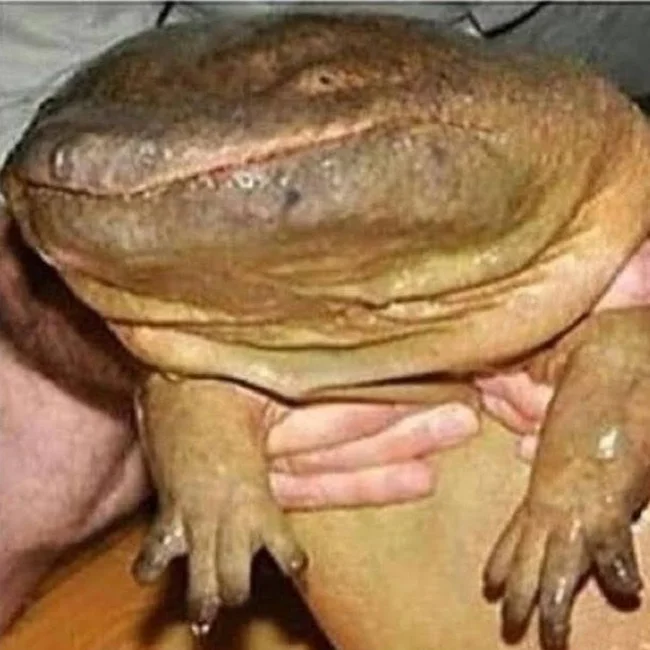
You won't see a cuter animal today.
If the Japanese salamander is still alive, then all four Chinese species are on the verge of extinction. Although both countries are very sensitive to preserving the habitat of unique amphibians, China has not been able to stop poaching - now it is the main reason for the decline in numbers. 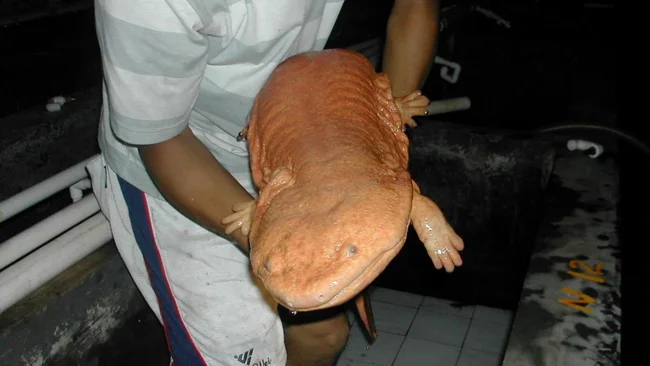
Reader, do you have a salamander? Then here you go, reader, a salamander. 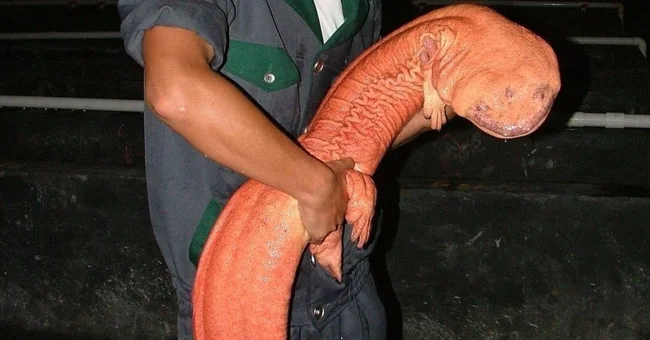
As you can see, our salamanders are very different from each other in color and body shape. This is due to the fact that the populations are far from each other and have their own mutations. That is why it was recently decided to single out separate species.
The thing is that the meat of the salamanders is tasty and tender, and also smells of mud and Japanese pepper, which is unusual. This is a delicacy that local residents have been eating for centuries. And they can’t seem to break this habit. Even the giant Jiangxi salamander is now under threat, although it was previously considered too ugly to be used as food. 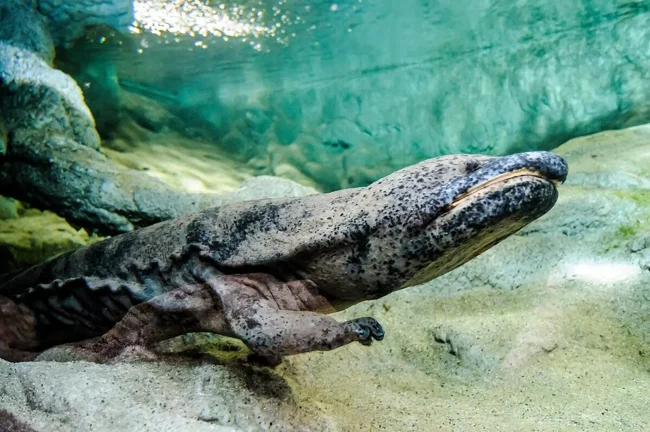
"Too scary for the Chinese to eat" sounds like some kind of achievement. 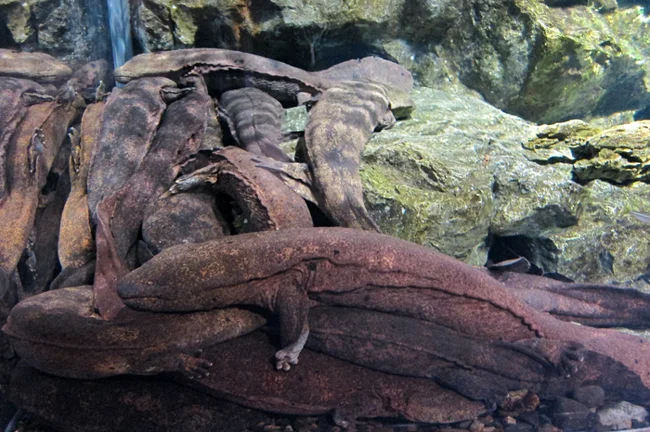
However, it is worth noting that the Chinese (and Japanese) are great in that they have already created farms where they actively breed these giants both for food and for release into the wild.
Now that we have taken amphibians apart, it is time to answer the question: are giant amphibians worthy heirs to the title of the largest amphibians? On the one hand, definitely not. After all, they cluster on the outskirts of rice fields and eat frogs, and do not rule river ecosystems. On the other hand, those who fought for the right to be called the top predators died out hundreds of millions of years ago. And all this time, giant salamanders continue to desperately cling to life. And this is already worthy of respect.













